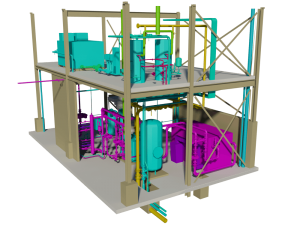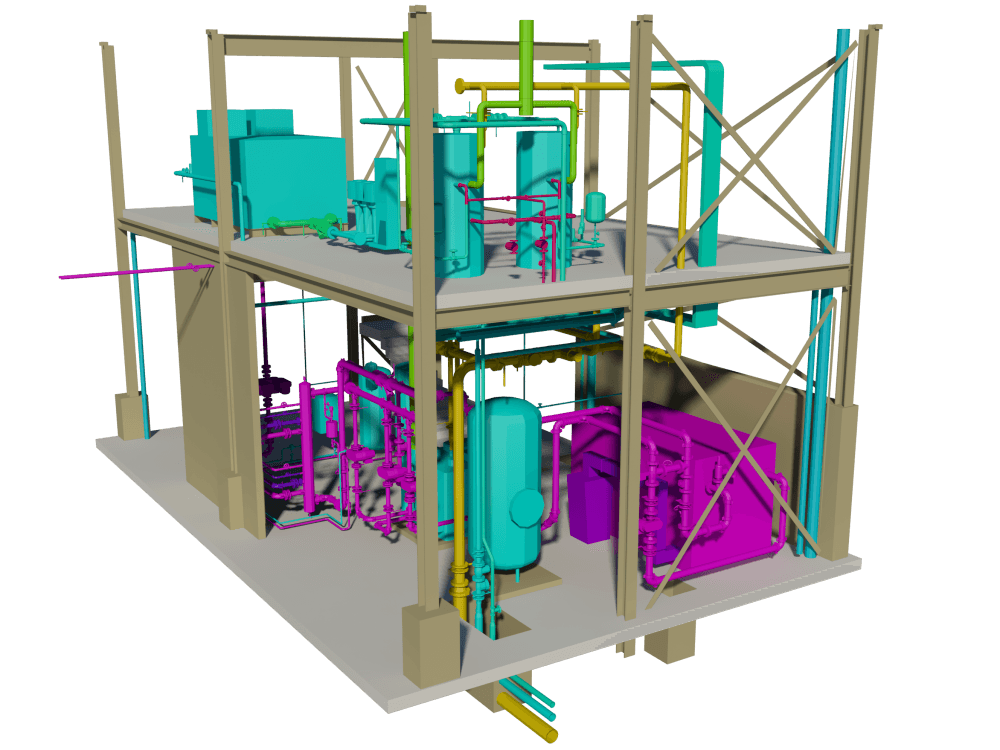If you are a construction company which is based in the UK, then you should be aware that BIM Compliance to Level 2 is now compulsory for all government construction projects. What this means is that your responsibility as a contractor to be able to demonstrate that you are BIM Level 2 ready by being able to detail the process you are using to meet each project’s requirements and that you are also adhering to the standards set by the UK Government.
But what is BIM Level 2? Basically, it is a clear definition of what, when and how information for any construction project should be created, managed and shared. If you are just starting to look at BIM Level 2, this article will help you to understand what it consists of, what the BIM standards that you need to meet are and everything else you need to think about to work towards becoming BIM Level 2 compliant.

The key elements contained in BIM Level 2 cover the creation of a federated model, the common classification of data, collaborative working, employer’s information requirement, information exchange methods and individually authored models. There are certain standards that you will have to meet pre-construction, in the design to the construction process, and during handover in order to achieve BIM Compliance. These standards are briefly outlined below:
Pre-construction Stage:
Follow the BIM Protocol
BIM protocol is a legal addendum that is included in every government project contract, and it outlines the BIM requirements for that particular project. If you want to work on that particular project, you will need to understand the requirements that are outlined in this protocol to ensure that you are able to comply with them.
Create A Project Plan
As with any project, it is always best to start at the beginning and, so you need to respond to the Employer’s Information Requirements (EIR) first in order to comply with BIM level 2. In order to be able to do this correctly, you will need to produce a BIM Execution Plan (BEP, a Master Information Delivery Plan (MIDP), and Task Information Delivery Plan (TIDP). That is a lot of plans! What these plans will do though is to provide you with a scheme for project deliverables, the schedule of works you need to follow, and everybody’s roles and responsibilities at every stage of the project.
The Design to Construction Stage:
Throughout any project’s life, you will need to be able to manage, store and exchange a lot of complex information and to achieve BIM Compliance you will need to use a Common Data Environment (CDE). This is a shared workspace where everyone involved in the project can store and manage all of the data relating to the project. This single storage point is intended to help you manage the whole project development process and so will also need to include a structured approval process.
Share Data Securely
BIM Level 2 also includes a standard called PAS 1192-5 which covers all of the security considerations for safely sharing project data which relates to the project and the client. You will, therefore, need controls in place to ensure information is being shared in a secure way. Whatever software you or your chosen BIM company use will need to include controlled access to information stored in the Common Data Environment and have the capability to track and manage activity
A Common Language
Everyone working on a project that needs to achieve BIM compliance needs to know where data lives, what the data is and where to find the data, and so you will need to use a unified classification system that uses a common language. Having a single system such as this will enable everyone to be able to access the data that they need quickly and easily!
Ensure You Use COBie
Another acronym! COBie stands for Construction Operations Building Information Exchange and is usually represented as a central spreadsheet where non-graphical data can be stores, shared and updated throughout the whole of the construction project. This can then be passed onto the client in order for them to be able to support the maintenance and operation of the building and it can also be used to verify that your data meets the requirements of the projects.
The Handover Stage:
Pass On Information
At the end of any construction project, you will need to be able to deliver the required project data to your client including an Asset Information Model which has been developed through every stage of the information delivery cycle. This should include all of the information that those managing and maintaining the building need in order to be able to do their job more efficiently.
A Smooth Handover
The UK Government has a soft landings policy that means you should include the facility operational team from the beginning of the project, and continue supporting them for a certain length of time post-handover. Don’t forget that these are the people who will manage and maintain the building once it is completed, and so by including them on the project from the beginning they will know the building inside and out.
This is just a brief overview of the basics of BIM Level 2, and what you need to do in order to achieve BIM Compliance, and you may have already realised that you need some help with it. To speak to any of the BIM experts at The CAD Room all you need to do is call us on 0161 427 0348 (UK) or 971 4 556 1988 (the UAE). Alternatively, you can email us at office@thecadroom.com

